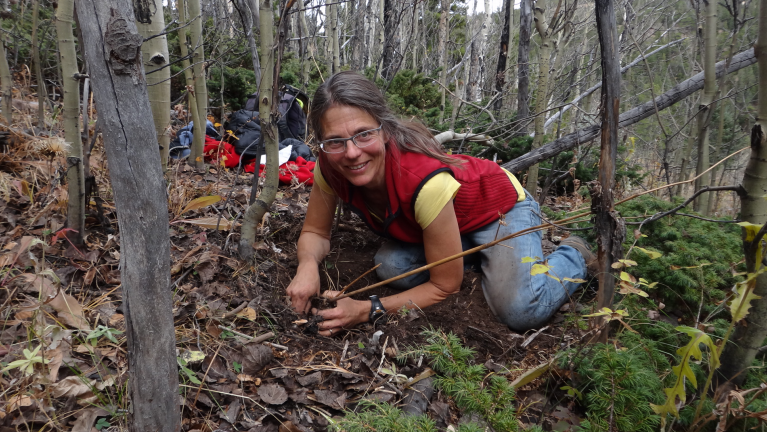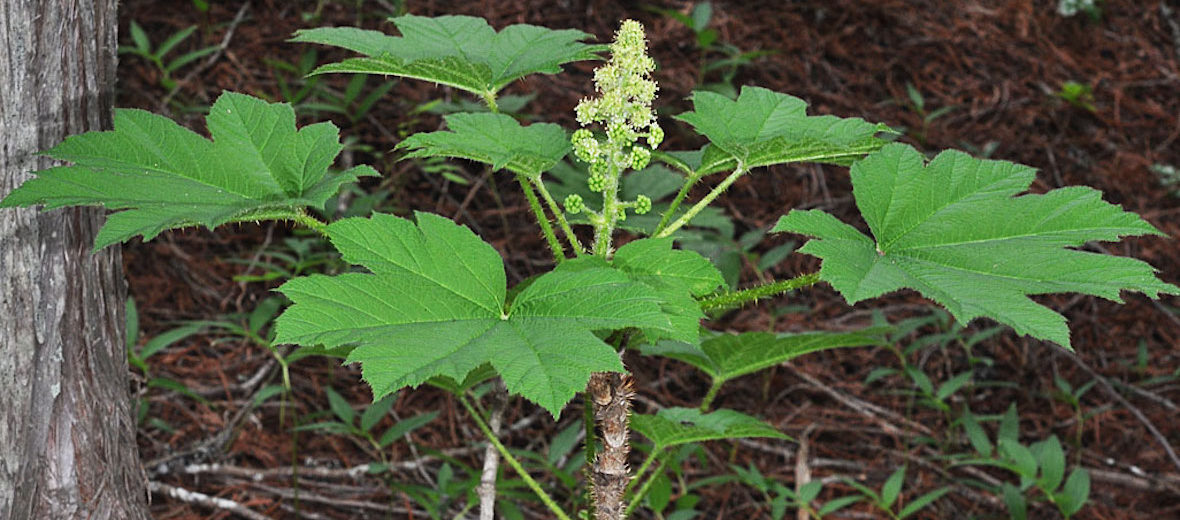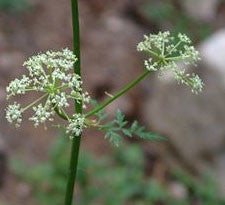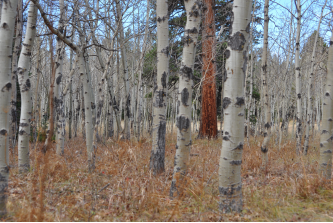26+ Osha Root Plant Identification
Oshá likes to grow in moist soils protected by the sun. Web The AHPA-ERB Foundation has committed to funding a multi-year sustainability study on oshá Ligusticum porteri by Kelly Kindscher PhD of the University of Kansas.
Osha Root Ligusticum Porteri Lung Support Herbs Plum Dragon Herbs
In Mexico the plant is commonly called chuchupate raíz.

. It was traditionally used by the Jicarilla Apache in ceremonial smoking blends with tobacco as well as by decoction to soothe sore throats and loosen phlegm in the chest. We are proud to offer this treasured botanical which has been organically cultivated. Web What is Osha Root.
Web Osha root Ligusticum porteri is a perennial herb in the carrot and parsley family ApiaceaeUmbelliferae. Web The main way to identify oshá though is by the root which is dark chocolate-brown and hairy with a particularly pungent smell. Root size of 2 year-old seedling plant.
Kindscher to study the impact of wild collection on oshá populations. 14 Among these L. Web Smell the leaves.
It is often twisted and contorted with the inside being lighter brown and fibrous. In North America there are 12 species of Ligusticum. Web It can also be identified by its small white flowers and wrinkled dark brown roots.
In March 2014 the foundation committed. Web Traditional Uses Osha is considered to be a warming herb strongly for the respiratory system and mildly for other body systems including the upper gastrointestinal cardiovascular central nervous system lymphatic reproductive integumentary and parasympathetic and sympathetic nervous systems. Ligusticum porteri also known as oshá pronounced o-SHAW wild parsnip Porters Lovage or wild celery is a perennial herb found in parts of the Rocky Mountains and northern New Mexico especially in the southwestern United States.
Osha Root Bear Root Ligusticum porteri known as oshá pronounced o-SHAW or O-shaw is a perennial herb found in parts of the Rocky Mountains and northern Mexico especially in the southwestern United States. If it had purple spots or stripes it is poisonous hemlock. Oshá also has a long history of use by Hispanics in New Mexico and the southwestern United States Moore 2003.
Roots of older plants are far stronger and more bitter than those of younger plants. If it smells musty its poisonous if it smells more aromatic its probably Osha. Web Oshá is a slow-growing member of the parsley family Apiaceae.
The plant has deeply incised elliptic or lance-shaped leaf segments that are 5 to 40 mm in width with larger basal leaves. In September 2012 the foundation awarded a 10000 grant to Dr. The seeds are classic Apiaceae seeds and similar to fennel dill caraway and ajwain.
48 Like other genera belonging to Apiaceae Ligusticums are identified by their compound umbels white or sometimes pinkish flowers distinctly ribbed and narrowly winged. Web We studied population structure root production and the ability of oshá to recover from harvest in different environmental contexts at two high-elevation southern Colorado sites with a goal of understanding what a sustainable rate of harvest might be. Be sure to identify these properly before grazing or eating.
Osha roots have a brown hairy fringe around the top of the dark root. In areas in the Southwest Mexico and the upper Rio Grande it is referred to as Chuchupate an ancient Aztec name for bear medicine. Web Osha root is a member of the Carrot or Apiaceae family of plants and is also known as Colorado Cough Root Chuchupate and Mountain Lovage among many other regional names.
Look at the roots. Web Expected appearance and plants from seedlings. They are edible but not as commonly used.
Its commonly used as a traditional medicine in both the US and Mexico. This farming practice helps to protect and preserve the existing patches of osha in the wild. Filicinum are most commonly known as osha.
Web Description Osha is an herbaceous perennial growing from 50 to 100 cm tall or more. Also known as bear root Porters licorice-root Porters lovage and mountain lovage osha has. Web Herb Garden Growing Osha Osha will only grow in moist areas at high altitudes.
Recommendation for Growing Osha from Root crowns Obtain fresh crowns dug up in the fall shortly before planting. Web Identify and analyze root causes to address underlying program shortcomings that allowed the incidents to happen. Oshá is mainly a mountain plant commonly found in deep moist soils rich in organic material and requires partial shade.
Osha root is a root that is found mainly in the Rocky Mountains. It is native to theNorth American Rocky Mountain regions above 8000 feet in Montana Wyoming Utah Colorado Arizona and. Web Common Names.
Look at the stem. Oshá is considered a rare species in Idaho because it is only found in one county yellow. In winter the above-ground parts die back to a thick woody and very aromatic rootstock.
These precious plants are grown for many years taking 7 to 8 years to reach a size mature enough for harvesting the roots. Porteri is known as true osha. Web In the Western Rocky Mountains of North America a very special root is known to grow.
Oshá distribution map by the Biota of North America Program BONAP States where oshá Ligusticum porteri is found are in dark green. Communicate the results of the investigation to managers supervisors and workers to prevent recurrence. Plants form large clumps over time and can reach heights of 6 to 7 feet and produce circular colonies with dozens of root crowns growing from a central root mass.
It is mostly a higher elevation plant from between 7000-10000 ft. It is almost impossible to cultivate it on lowlands for personal use. Web Dried roots do not have the astringent effect.
Osha is common along forest edges and ravines of the Rocky Mountain Colorado Columbine and Aspen Bluehills. Jun 18 2020 Preparing the Soil Planting Plant Care Pest Disease Control Harvest Storage. Web Ligusticum porteri- Osha also known as Bear Root Bear Medicine Indian Parsley Colorado Cough Root Chuchupate Porters Lovage Mountain Lovage Love Root Wild Parsley Licorice Root and Mountain Ginseng.
Discover the plants soil irrigation and care requirements for osha below. Throughout herbalism it is known as Oshá Bear Root or Lovage Ligusticum porteri. Web In North America there are 12 species of Ligusticum.
Counties where it is found are in light green. Part Used for Medicine. Its roots are currently wild-harvested by individuals and herbal product companies for sale and use in treating influenza bronchitis and sore throat.

Is Osha Being Over Harvested Sustainable Herbs Program

Osha Root 5 Key Benefits Dosage Safety The Botanical Institute

The Bear Root Osha Blair S Herbals

Osha Ligusticum Porteri Seeds Strictly Medicinal Seeds

Ahp Monographs Osha Root American Herbal Pharmacopoeia

Osha Ligusticum Porteri Seeds Strictly Medicinal Seeds

Osha Native Medicinal Plant Research Program

Plant Profile Osha The Foragers Path Flagstaff Arizona

Ahp Monographs Osha Root American Herbal Pharmacopoeia

Osha Root The Herbalist

Dirt Doctor Library Topics

Osha Root Ligusticum Porteri Village Herbals

Missoula Independent By Independent Publishing Issuu

Times Of Tunbridge Wells March 29th 2023 By One Media Issuu

The Bear Root Osha Blair S Herbals

Premium Vector A Plant With A Root System Pours Rain Flat Vector Illustration

Osha Ligusticum Porteri Seeds Strictly Medicinal Seeds